Wingspan Food Cost vs. Victory Points
The last time I investigated the topic of food costs vs. victory points scored, I formed an idea that I called “the 5/10/15 rule.” The premise of that rule was to strive to achieve five points scored for every single food you invested into a bird’s cost.
That scale was set on the front end by the mold-breaking birds that are worth five raw points but only cost a single food. In my sampling, I was able to reveal that many birds had to rely on their powers to close the gap to ideal food efficiency. The sampling showed that several birds fell into clear cut-offs at each price point. See the previous Wingspan strategy article on this topic for examples. It was pretty obvious that birds at three food cost had a much more difficult time reaching the ideal of peak efficiency on the 5/10/15 scale.
In theory, this makes them much less desirable than cheaper birds. In practical application though, it was consistently obvious that these point bombs have an important role to play throughout any given game. They are essentially the victory point output of strong forest engines that are swimming in food or bonus plays for people benefiting from shared resources or passive resource generation.
These revelations nagged at me for a while, but I didn’t dig much deeper into the topic, content to just keep playing the game and accepting that Wingspan was a very sensitive game where small values could tip the scales hard in one direction or another.
More recently, I constructed a matrix of Victory Points per Food Cost. Visually, this matrix made it very obvious how inefficient three cost birds were at meeting the 5/10/15 rule. When I focused on the maximum value of raw victory points (nine-point birds) at three food cost, I looked back through the matrix, and something new leaped out at me.
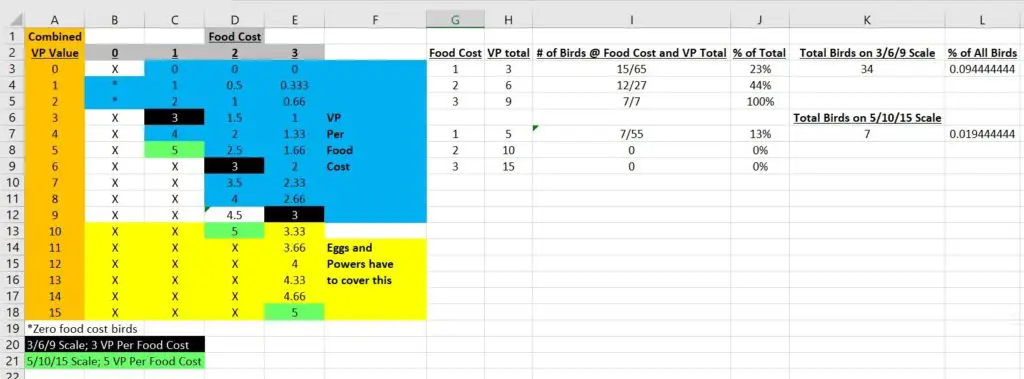 In any given game, there are many more birds that can realistically adhere to a 3/6/9 scale than a 5/10/15 scale. The 3/6/9 scale seems like a more realistic way to gauge bird cost efficiency.
In any given game, there are many more birds that can realistically adhere to a 3/6/9 scale than a 5/10/15 scale. The 3/6/9 scale seems like a more realistic way to gauge bird cost efficiency.
Gauging Bird Cost Efficiency on a 3/6/9 Scale
The 3/6/9 scale theoretically makes it much easier for many birds to reach their “ideal efficiency” (three points per food invested) without relying as heavily on powers or eggs. This means that the “five for one” birds represent a high watermark and are hyper-efficient. As far as food costs go, consider them the Ravens of their archetype (that being the most food-to-point efficient birds). Realizing this makes it more clear that setting the scale at 5/10/15 is unreasonable. That would be like using the Ravens’ power to gauge the merit of every other brown power in the game.
A lot of those powers would fall quite a bit short in comparison. Understanding these things also reveals how chaotic point values are at the front end of the scale. You can score two points with a zero food cost Black Vulture or seven points with a single invertebrate cost Spotted Sandpiper in conjunction with Food Web Expert. It’s like the exact opposite problem that three food cost birds have to deal with on the 5/10/15 scale.
The 3/6/9 scale forces me to take another look at an archetype of a card that I have maligned in the past. That being “Six Point/2 Egg/Bad Power/2 Food Cost” (i.e., Black Skimmer and friends). These birds actually realize their ideal efficiency on the 3/6/9 scale by virtue of just making it to the board in the same fashion as the “five for one” birds do (which reach 166% efficiency on the new scale and adequately quantify just how good they actually are).
Furthermore, there are several “four for one” birds that come in at 133% efficiency. Some outstanding examples include American Crow and the Hummingbirds (which can become ridiculous under Omnivore Specialist; 200% efficiency). Hooded Warbler (two food, seven points; 117% efficiency) and Blue-Winged Warbler (two food, eight points; 133% efficiency) shine a lot brighter on the new scale as well.
I will keep this post a bit shorter than some of my more long-winded Wingspan strategy writings. I just wanted to share my developing thoughts on this topic. Thanks for reading. Let me know what you think in the comments below.
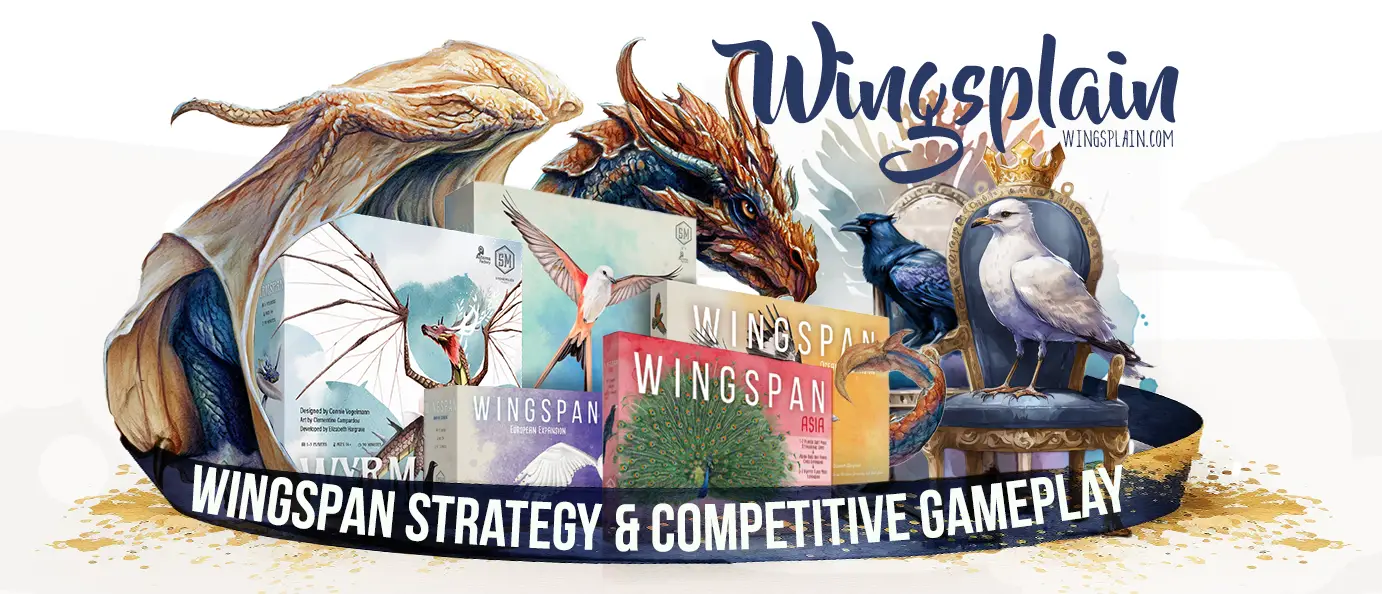
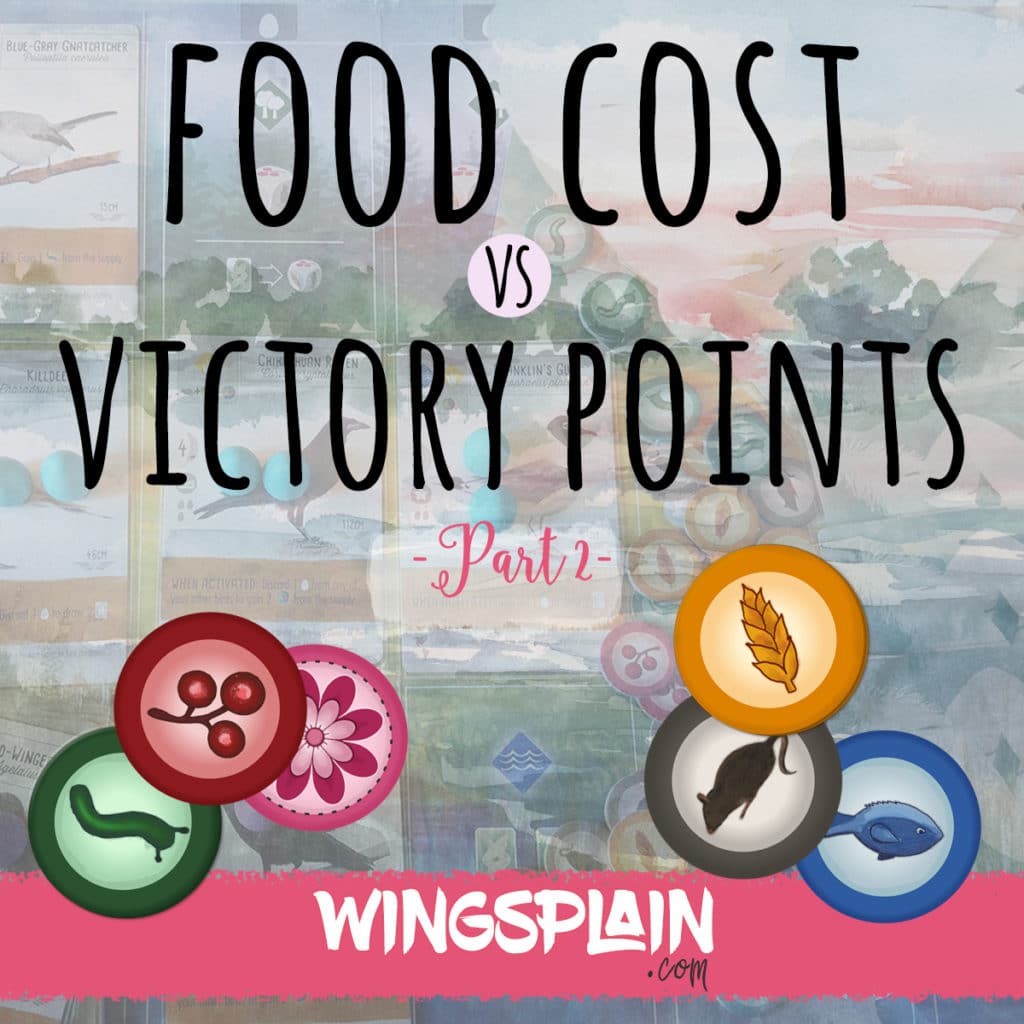
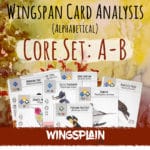
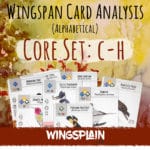
I think you’re getting closer. One thing you’re still leaving out though is the turn cost of actually playing the bird. The reason the big vp birds are valuable payoffs for having a strong food engine isn’t that they’re especially food efficient birds, because they really aren’t. The reason why they are good is because the 3 food birds allows you to spend 3 food in 1 turn and get a hefty amount of VPs without any further investment (eggs, power activation, etc). On the other end of the spectrum, Vultures aren’t terribly good for anything other then turboing out a level 2 biome during round 1 because despite not costing any food, the points they give just isn’t worth the turn you spend putting them down. For this reason, I would advocate for something like a 5/8/10 scale, where egg slots are worth half a point each. Here we make some interesting observations:
2 food cards with bad powers like Barn Owl and Horned Lark are slightly inefficient if you don’t get any hits off their power, but even bad powers are likely to find a hit once during a game, esp if they’re in grasslands, so they’re fine.
All the 1 food 5 vp birds are indeed very efficient, coming out to 6 points with this scaling.
Cards like Mountain Chikadee and Red Shouldered hawk are capable of smashing this scale into tiny pieces if played early enough, but they also don’t really help the forest generate food so you’ll need to activate the forest more often as opposed to playing birds or doing other things.
This rating still only looks at the vps a bird generates, which works reasonably well for higher cost birds but for resource generation birds like the Ravens or Spotted Towhee it criminally underrates them. Still not entirely sure how to rate food generated considering it doesn’t directly translate into vp. My gut says that each food is worth about 2 points (as it takes 1 turn to activate the ability/get food and another to actually play the bird), but unlike eggs that convert directly into points at the end of the game, the usefulness of food drops off considerably towards the end of the game as grassland activations become more valuable and playing birds becomes more expensive (due to scaling egg cost)
The cost of an action cube is something I think about when I am theory-crafting it just doesn’t express itself in this particular post. I generally agree with everything you’ve said.
I agree that looking at the cards strictly through the lens of food cost to raw VP underrates certain cards that are good but for other reasons. I guess that is a blind spot in this post. Having the situational awareness to understand when cards are better or worse than normal is an important skill to develop.
Thanks for reading and commenting.
“The 3/6/9 scale forces me to take another look at an archetype of a card that I have maligned in the past. That being ‘Six Point/2 Egg/Bad Power/2 Food Cost’ (i.e., Black Skimmer and friends). ”
It took me a while, but I started to kinda like these birds. Especially with Oceania added, there’s more reason to invest into wetland, and Black Skimmer is a 2-food, six-poins bird that counts for several bonus cards including Falconer. (We could find other examples for forest and grasslands, of course.)
The “cost of an action cube” is another factor that I didn’t really care about, and it was a mistake, I need to not forget about that. We all know that cubes are the most valuable resource, et we tend to forget about that, namely when we’re distracted by some unexpected opportunity like P4 bird showing in a tray.
You need to explain what each of the numbers in “3/6/9” and “5/10/15” represent.
3 victory points per food, then ???
The link to the “part 1” 5/10/15 article does not go to such an article.
That’s all it means. Victory points per food. Thanks for the heads-up on the incorrect link.